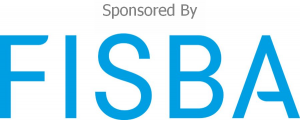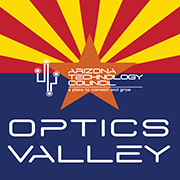
Optics Valley Technical Series: Fast Axis Collimator Micro-optics for High-power Diode Lasers
Register
In the high-power diode laser industry, the available laser power from edge emitting facets has to be collimated for use in the many different applications.
This webinar will focus on the first lens after the diode laser facet, the fast axis collimator (FAC), formed as a circular lens. As examples micro-optic collimation is presented for two applications:
- Laser-spot formation for individually addressable laser bars for CTP printing
- Collimation for a high-power diode bar emitter developed for automotive LIDAR applications
Who Should Attend?
Professionals with roles in the development and application of laser technologies:
- Executives
- Engineers
- Researchers
- Managers
About the Presenter:

Martin Forrer has a master’s degree as Physicist from ETH Zurich and a PhD in medical laser applications from the University of Berne. He started his work in industry in 1997 on European projects to increase high power for diode lasers in the infrared. Since then he has realized various successful product developments up to the industrial scalability in micro-optics, endoscopic micro-camera vision and diode laser integration. After 13 years leading the FISBA R&D team he took a new challenge in 2019 as Senior VP Business Development.
Full Program Description:
In the high-power diode laser industry, the available laser power from edge emitting facets has to be collimated for use in the many different applications. Some variants for this collimation function do exist, industrially widespread is the use of glass material collimation micro-optics, separate for fast and slow axis of the laser emission. We will focus on the first lens after the diode laser facet, the fast axis collimator (FAC), formed as a circular lens.
Performance aspects for the optical collimation function and its application as a micro-optical assembly are presented. In view of the rising power levels available for high power blue diode laser emission we show results for FAC in fused silica material, as opposed to high refractive index glasses.
Fully automated variants for assembly of micro-optics on a bottom tab is done in a controlled active positioning mode relative to the facet of the Fabry-Perot cavity emission with up to 5 or 6 axis and with feedback from the laser light collimated by the refractive component. The FAC also is automatically characterized by an optical measurement in front of a specific diode laser source.
As examples micro-optic collimation is presented for two applications, laser-spot formation for individually addressable laser bars for CTP printing and collimation for a high-power diode bar emitter developed for automotive LIDAR applications.
 |
|
 |
|
Since 1957, FISBA has worked hand in hand with customers to develop and produce optical components and systems according to customer specifications while keeping the company mission of a “Spirit of Partnership” in mind. It has been a company priority to stay progressive in its thinking without losing sight of the values on which it was founded. This mindset has enabled FISBA to become one of the most innovative suppliers in the optics industry as well as a trusted partner to their customers. Today FISBA is a worldwide leading supplier of customized optical components, systems and microsystems with locations across Europe, the US and China. |
|
Optics Valley, a committee of the Arizona Technology Council, is one of the leading clusters for optics, photonics and astronomy in the world. Optics Valley’s mission is to catalyze, convene and connect optics, photonics, astronomy and the supporting business interests throughout Arizona. Members of Optics Valley cover the broadest range of research, services and products from micro-components to big data to complete optical systems. Visit www.aztechcouncil.org/optics-valley-arizona to learn more.
|
Location
Virtual , Register to Attend
Venue
Virtual Event
Date
November 11, 2020
Time
8:00am - 9:00am
Cost
Free to ALL
Register
